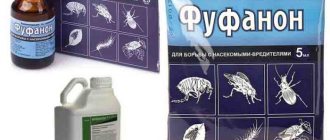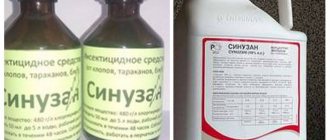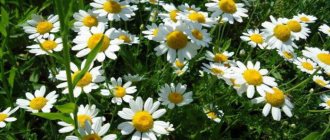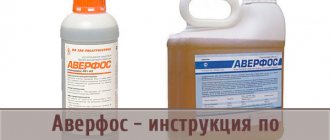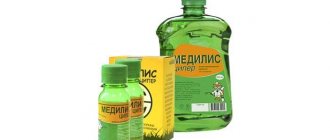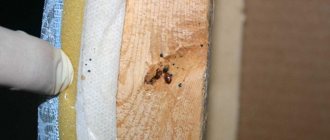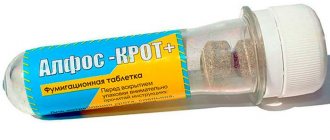What is urea?
Urea is a fairly old mineral fertilizer that has good reviews both for home use in summer cottages and on a large farm scale.
It is perfectly stored, packaged in 50 kg polyethylene containers (bags). Urea is a highly concentrated, ballast-free nitrogen mineral fertilizer
Let's find out in more detail what urea is:
- This is an instant fertilizer, unlike many other mineral fertilizers; it does not need to be infused for hours or waited for a day.
- The composition of urea is carbon, hydrogen, nitrogen and oxygen, combined into the formula carbonic acid diamide.
- The fertilizer formula is CH4N2O.
- This mineral fertilizer is also known as urea. In its composition it contains 46.2% of the active substance - nitrogen.
- Outwardly, it is not a powder, but white or pearl-colored granules that are odorless.
- Its main purpose is to stimulate the growth and development of fruit and berry plants, shrubs or trees as a result of enriching them with nitrogen.
Seedlings fed with urea or mature trees can be immediately distinguished by their juicy dark green leaves, stems, and dense crown.
There are two main types of monofertilizers containing nitrogen - urea (carbamide) and ammonium nitrate. This is the so-called nitrogen group. The main difference between these two substances is the different concentration of nitrogen. Ammonium nitrate has 34.2% active ingredient, so it is added in larger quantities to achieve results.
Urea is the most highly concentrated nitrogen fertilizer today.
Gives good results when fertilizing all crops
Benefits of urea:
- Increasing the plant's immunity, which reduces the incidence of disease and helps fight pest attacks and weather fluctuations (frosts and drafts). Treated seedlings are more resistant and strong.
- Increasing the yield of the garden and vegetable garden.
- Improving the taste of fruits, berries, vegetables. Nitrogen stimulates the proper development of the plant and the storage of useful vitamins and microelements.
Composition and formula
Urea nitrate has been used for a long time in its natural form - cattle urine. It was evaporated and then used as a liquid with a strong odor. At the moment, scientists obtain urea using chemical compounds, but the effect remains the same as from natural urea.
The chemical formula is H2N-CO-NH2. The combination of carbon dioxide and ammonia provides the necessary substance for the growth and development of plants. In this case, the agrochemical has two types: B and A. Each type must be used in its own field:
- Gardening work is carried out by brand B. Sold in granules. Color: yellowish or earthy. Can also be purchased in tablet form. This form is much more profitable and convenient for use and storage.
- Type A is used in the chemical industry. Included in various drugs and chemicals. Completely unsuitable for work in the garden or in the country.
Interesting fact! The cost of urea tablets is higher than that of regular granular powder. The advantage is long-term storage. Economical. After all, two times less is applied to the soil than granulated. When calculating the cost of granules and tablets, the difference is insignificant.
How is it different from ammonium nitrate?
The first and main difference between nutrients is that urea is an organic fertilizer, while ammonium nitrate or ammonium nitrate is a mineral salt of nitric acid, which is an inorganic compound. The difference between the above fertilizers is as follows:
- the solubility index of urea is better than that of ammonium nitrate;
- despite the fact that both fertilizers are nitrogen fertilizers, the amount of active substance (nitrogen) in urea is higher;
- ammonium nitrate is limited only to its application to the soil, while urea can be used for foliar treatment of plants;
- due to the fact that urea is an organic fertilizer, its effect on plants is softer and more gentle;
- to reveal its effectiveness, urea needs more time than nitrate, but the positive result after it lasts longer;
- urea is firmly fixed in the soil, therefore it is not prone to being washed out by precipitation
Urea - What kind of fertilizer is this, what is it for?
Among the variety of fertilizers for the garden and vegetable garden, used both in spring and autumn, carbamide or urea is widely known. This fertilizer is in the form of white granules, containing 46% nitrogen. Urea is the richest nitrogen-containing fertilizer, has good solubility and is characterized by the absence of any odor. As the temperature increases, the solubility property increases. It is easy to appreciate the importance of using urea in gardening and gardening, knowing the importance of nitrogen fertilizer for all types of plants.
Urea fertilizer is used for:
- growth activation,
- obtaining abundant harvests,
- keeping plants healthy.
Urea is a good helper in the garden. Thanks to this approval, plants gain color well, have a bright green color, and bring a rich harvest.
It is worth taking the treatment of soil and plants with urea more seriously. A lack of nitrogen leads the plant to a depressive state, the appearance of barren flowers, and, accordingly, a poor harvest. Some plant species may simply die due to lack of nitrogen. It is also important not to overdo it with urea fertilizer. An excess of nitrogen also negatively affects plant development. It is worth carefully familiarizing yourself with the dosage of urea for each type of plant.
Chemical and physical properties of urea
Urea is commonly called urea. This is a nitrogen fertilizer that is obtained during the Bazarov reaction. Urea is synthesized at a temperature of 130-140°C from carbon dioxide and ammonia. Its formula is: H2N-CO-NH2. The substance is soluble in water, liquid ammonia and sulfur dioxide. Insoluble in chloroform and alkanes, that is, in non-polar solvents.
Since ammonia must be used to produce urea, urea production is combined with ammonia production. In urea, nitrogen atoms are represented by nucleophiles, therefore, when interacting with acids, the process of nitration (formation of salt and nitrosourea) is triggered. This must be taken into account when combining urea with other fertilizers, especially acidic ones.
Operating principle
Spraying with urea is allowed in the presence of harmful insects, as well as in the event of diseases:
- powdery mildew;
- purple spot;
- scab.
Urea for the garden is an indispensable tool, as it doubles and even triples the harvest. Only application should be at the root along with digging in a diluted form.
All actions with fertilizer to increase the number of fruits are carried out in early spring, when frosts do not affect the soil. The standard dilution is half a kilo (maximum 700 g) of granules per 10-liter bucket.
Do not be afraid if the substance gets on the green part during spraying and processing in general. It will not cause harm, nor will it cause burns. Experts say that urea is an indispensable product in all dachas and gardens. Since it helps to quickly remove problems in the form of parasites and dangerous diseases.
Release forms
Urea is produced under brands A and B. Brand A is needed for industrial purposes, and brand B is used as a fertilizer. Most urea is produced in the form of white granules with a grayish-yellowish tint, but tablet fertilizers have recently appeared on the market.
Urea tablets are more effective because their coating prevents nitrogen from evaporating quickly during decomposition. The proportions of urea application in granules and tablets are different; usually fewer tablets are required, but their cost is higher.
The benefits of urea for plants in the garden
Urea began to be used for fertilizer due to its nitrogen content (45%). Plants need nitrogen to build up vegetative mass, but in nature the compound is quickly washed away by precipitation and evaporates. Therefore, it is recommended to apply additional urea to replenish nitrogen reserves in the soil.
Fertilizing with urea does not increase the concentration of nitrates in the soil, because a large amount of urea evaporates during decomposition. However, rapid evaporation also has negative features, because plants only have time to absorb half of the fertilizer. It is not recommended to increase the dosage; this leads to increased nitration.
Since increasing the dosage is fraught with plant burns, when fertilizing poor soil, it is better to mix urea with magnesium sulfate (3 kg per 100 l of solution). This is a mineral fertilizer that is necessary to maintain photosynthesis; it neutralizes the aggressive reaction of urea to sprouts.
Composition and benefits for plants
Urea or urea is a small white granule containing about 46% nitrogen. Urea is one of the most concentrated nitrogen compounds. Most often, an aqueous solution is prepared from urea, and the rate of dissolution of the granules directly depends on the temperature of the liquid. Gardeners use foliar feeding, autumn treatment of the garden with urea, as well as application to the root area and treatment against pests.
The composition of urea fertilizer includes the amide form of nitrogen, which, when released into the soil, turns into ammonia and then into nitrate. This happens quite slowly, so the plants have time to absorb the nutrients. Under the influence of oxygen, ammonium carbonate in the composition of urea disintegrates and evaporates, so surface application is recommended with further incorporation into the soil.
Treating the above-ground parts of plants with urea also helps to obtain the necessary substances, while there are no marks or sunburns left on the leaves and stems, which makes this fertilizer not only effective, but also safe.
Features of the use of urea fertilizer are discussed in the attached video.
https://www.youtube.com/watch?v=d9ax6EpvJis&feature=youtu.be
Advantages and disadvantages of urea fertilizer
In terms of nitrogen content, urea can be compared with sodium nitrate and ammonium sulfate, but unlike ammonium sulfate, urea acidifies the soil less. On sandy loam and sandy soils, the fertilizer works even better than ammonium nitrate.
Advantages of urea over other fertilizers:
- accelerates the growth of vegetative mass by plants;
- increases protein concentration in crops;
- can be used for pest control;
- the substance mixes with water without sediment, which makes it convenient for use in home areas;
- does not contribute to the accumulation of nitrates.
The disadvantages of urea include the risk of burns to plants and their subsequent death if the fertilizer is used incorrectly. Urea cannot be combined with many types of fertilizing; it decomposes quite quickly and can harm the sprouts. The negative properties of urea are most pronounced in an alkaline environment, but adverse effects can be avoided if the fertilizer is applied in advance.
Features and dosages of fertilizing plants with urea
In order to determine a reasonable solution concentration, it is necessary to take into account the needs of each crop and the composition of the soil. On depleted soils, the use of urea will help increase productivity. It should also be noted that only half of the applied dose will have time to be absorbed by the plant, so it is better to give preference to frequent fertilizing rather than a one-time application of urea. Autumn application to the soil for preparation before spring planting is impractical, because nitrogen fertilizers tend to quickly decompose and evaporate. Spring fertilizing of the soil is more justified, as is the foliar use of the prepared urea solution.
How to understand that plants do not have enough nitrogen
Nitrogen deficiency can be characteristic of any type of soil, but most often sandy, sandy loam and loamy soddy-podzolic, as well as red soil and gray soil. As a rule, this is detected in the spring, when mineralization processes slow down under the influence of low temperatures. Usually the ghosts of nitrogen deficiency are visible to the naked eye.
Signs of nitrogen starvation in plants:
- light or yellowed green mass;
- slow growth and development;
- depressed appearance;
- small inflorescences;
- small and narrow leaves;
- dying and shedding of ovaries.
It is necessary to take into account all the signs, since yellowing of the leaves is also observed with a lack of moisture and iron. To accurately “make a diagnosis”, you need to take a closer look at the greenery during daylight hours. Due to lack of moisture and iron, the leaves wither during the day; young leaves turn yellow first, and with nitrogen starvation, old ones first.
How to use?
Instructions for using urea are not particularly complicated.
Let's consider the timing of application of the product and its dosage:
- The first feeding is in the frozen ground. Thus, useful substances enter deep into the pores of the soil.
The rate of application of urea fertilizer is 50 kg (one bag) per 50 acres or, in terms of a summer cottage, 1 kg per 1 acres. As the seeds germinate, they will take all the useful components from the soil. The plants will be strong and resistant to spring frosts.
- The second feeding is carried out after the seedlings have rooted (after 7–10 days). When sowing seeds in open soil, apply phosphorus fertilizers or organic matter (wood ash, compost). Urea cannot be added when sowing seeds.
- Repeated fertilizing is done every 14 days, but no more than 2-3 times during the period of growing vegetable or fruit crops.
- 15 days before harvesting, urea fertilization is stopped. Otherwise, you will get nitrates in vegetables or berries due to an excess dose of residual substances.
In order to avoid a chemical reaction that is dangerous for plants, urea must not be mixed with other fertilizers.
Suitable for all application methods and timing
Preparing to fertilize the soil
Urea granules are highly soluble in water, so they are easy to use in both home and industrial use. Preparing the solution is not difficult even for an inexperienced farmer. For feeding, a solution with a concentration of 0.5% to 1% is usually used. This is 5-10 g of urea per 1 liter of water or 50 g per 10 liters.
It must be remembered that the liquid solution of urea is 8-10°C colder than air. Watering with a cold solution can stress plants and reduce disease protection. Fertilizing should be done with a solution close in temperature to the air temperature.
How to breed?
Urea is used as the main fertilizer or top dressing. To provide the plant with the amount of active substance it needs, it is important to follow the dosage, proportions and consumption rates indicated on the fertilizer packaging. They depend on the type of crop, its age, the structure and moisture of the soil, the time and method of applying fertilizer.
The principle of preparing a water-based solution is simple and consists in completely dissolving the required amount of granular substance in 1-2 liters of warm water. After this, the resulting solution is topped up with the volume of clean water specified in the instructions. To spray garden and indoor plants, use a 0.5-1 percent solution of an agrochemical. Preparation recipe: dilute 5-10 g of urea in 1 liter of water (50-100 g per 10 liters).
When application is not effective
Autumn application of Urea to the soil is impractical. During this period, microorganisms decompose in the soil, and ammonium is also destroyed. In early spring, before the start of the growing season, it makes no sense to feed the soil with Urea, since the granules are quickly washed away by rain and do not enrich the soil with nitrogen.
How to treat a garden with urea (video)
Cultivation of the garden and fertilizing of garden crops should be carried out in the morning or evening hours. Standard instructions for preparing the solution involve dissolving 30-40 g of urea in 10 liters of water. Features of application and application rate depend on the type of soil.
| The soil | Features of feeding |
| Light, soddy-podzolic | Preference should be given to applying urea against the background of active irrigation |
| Rainfed conditions | Urea and urea are equivalent under the main application conditions |
| Neutral and alkaline soils | In order to increase efficiency and reduce losses of nitrogen-containing components, immediate plowing into the soil and watering is carried out |
It is important to remember that spraying fruit and berry plantings with urea can slow down the growing season, which helps protect the ovaries from death in early spring. That is why such an event is recommended as one of the mandatory ones when cultivating early ripening stone fruit varieties. Spring treatment of garden plantings against diseases and pests with urea must be carried out in a timely manner.
Urea application methods
This fertilizer can be applied in two ways.
- The first is spreading dry fertilizer by hand with further abundant watering in the warm season. If the fertilizer was applied to frozen ground, then rain, ice and snow will dissolve the fertilizer naturally. You can use equipment - a fertilizer spreader, and set the rate (100 kg of urea per 1 hectare of sown area). The spreader is sometimes replaced by a conventional seeder.
- The second way to apply nitrogen fertilizer is to use a liquid solution. Take a volume equal to a matchbox and dilute the urea in a bucket of clean water, mix everything thoroughly. After 5 minutes, using a sprayer, watering can or broom, you can begin cultivating the soil. It is better not to spray the plants themselves to avoid chemical burns.
If you need to feed fruit trees or bushes, both methods of fertilization are suitable. Urea is applied to the root circle. The need to water the soil depends on the application method. When dry matter is scattered, it is required.
The amount of fertilizing of trees and shrubs varies between 2-3 per fruiting season. For best results, you need to alternate mineral and organic fertilizers.
You should also try to comply with application rates to prevent plant injury (spots, burns).
If you grow grain crops on your plot, then urea is usually applied once to the frozen ground before sowing.
If the soils are severely depleted, urea can be used in the fall. In this case, a very weak dosage is taken - about 20-30 kg per hectare of area or 200-300 grams per hundred square meters.
Proportions of urea for different types of feeding
- Dry feeding. Calculate 50-100 g per 10 m2. The urea is deepened to 10 cm of moist soil and additionally watered.
- Applying the solution to the soil. For vegetable, fruit and berry and ornamental plants, you need to take 200 g per 10 m2.
- Spraying. Vegetables - 50 g of urea per 10 liters of water, and shrubs and trees - 100 g per 10 liters. The same proportions are used for spraying 20 m2.
- Landing. Urea is applied so as to prevent contact of the fertilizer with the roots. The substance is mixed with soil and deepened by 10 cm. Take 4-5 g per hole.
- Root feeding of vegetable crops with a solution. Use 3 g per liter of water or one plant. During the period of ovary formation, the dosage is increased to 5 g per liter of water.
- Fertilizer of berry and ornamental shrubs. Urea is scattered around the bushes and covered with earth at the rate of 70 g per bush. You can pour fertilizer into the furrows, and after applying the soil, water it.
- Fertilizer of fruit and ornamental trees. The proportions will depend on the type and size of the plant, but usually use 100-250 g for one tree. For fruit-bearing trees, apply 50 g more urea.
Urea fertilizer - how to use?
In large areas, farmers and agricultural producers use urea by scattering dry granules. But this method is ineffective if you do not listen to the weather forecast. If it doesn’t rain in the next 2-3 days, and the urea (urea) remains on the surface of the soil, then we can assume that the fertilizer (money) is thrown away, since urea quickly loses its properties in the open air.
How can we, gardeners, better use this fertilizer? There are several ways:
- These are feedings - root or foliar,
- This is the protection of plants from diseases and pests.
Whatever one may say, scattering granules over the surface of the soil, directly at the site where the plant grows, is the most common way of using urea as a fertilizer.
You can use a rake and sprinkle a little top dressing with soil - this is an important point, because the fertilizer is always mixed with the soil! After fertilizing, the soil should be watered, unless, of course, it is dry.
There are several methods for using urea: the first is pre-sowing fertilizing, when urea balls are buried into the ground at least 5 cm. This is done during spring and/or autumn digging of the earth.
Spreading urea on the site, photo:
Second, during planting or sowing, in order to maximize the effect, urea is mixed with potash fertilizers. During this, it is extremely important to prevent the seeds from coming into contact with the granules - there must be a layer of soil between the fertilizers and the seed.
The third method is considered the most productive; it is carried out during the growth of green crops - this is foliar feeding. The granules are first dissolved in water, and then the above-ground parts of the plants are irrigated. It is best to do this early in the morning or after sunset; there should be no wind or rain during the procedure - this is important.
Foliar feeding (spraying), photo:
Urea - dosages for different crops
For spraying, you can use special garden sprayers with a pump. Urea dissolved in water does not harm the foliage, so you do not have to worry about burning it. The standard dosage for creating a urea solution for foliar feeding of vegetable, berry and fruit crops involves diluting 10-15 g of the product in 10 liters of water.
It should be taken into account that for herbaceous crops you need to make a less strong composition, for trees or bushes a more saturated one is suitable. For large trees (pears, apple trees, quinces, peaches), which are already more than 4-5 years old, you can take 200 g per 10 liters of water. Apricots, plums, cherries or cherries will need approximately 120 g per 10 liters.
An approximate calculation of doses for certain garden representatives looks like this:
- Cucumbers, beans, peas and other legumes - from 6 to 9 g per 1 m².
- Tomatoes, carrots, beets, radishes, potatoes, onions, garlic, peppers and various types of cabbage - from 18 to 25 g per 1 m².
- Eggplants, squash, any variety of zucchini - from 10 to 12 g per 1 m².
- Strawberries, raspberries, wild strawberries - from 50 to 70 g per 10 liters of water (at the end of summer).
- Fruit trees, shrubs - from 5 to 12 g per 1 m².
For example: 1 tablespoon equals 10 g of urea, and a matchbox holds 15 g. A standard faceted glass holds 140 g of the product. Remember that dry fertilizer is applied to the soil either when planting plants, or during spring/autumn digging. For other cases, only an aqueous solution is used.
Urea as protection against pests
Urea is used not only to maintain the vitality of your green inhabitants, but also to combat parasites. Aphids, copperheads, weevils and many of their comrades die after irrigation with a concentrated urea composition. To destroy pests, 60-70 g of urea is dissolved in 1 liter of water. This is a very concentrated solution. It can be sprayed on fruit trees only on bare branches.
But, attention! It is extremely important to do this in spring, when the daytime temperature is approximately +5..+7 °C, and the buds have not yet woken up!
This way you will be sure that you are guaranteed to destroy all the parasites that overwintered under the bark.
With the onset of autumn, as soon as the plants lose their leaves, it is recommended to spray all suspicious trees and shrubs with the same concentrated solution. Crown, branches - everything is processed.
This is a very effective remedy against diseases and pests of garden crops. Any infectious disease, for example, rust, scab, spotting, will be destroyed, and next year there will be no trace of them. Thus, you will bring double benefit to the plants - you will get rid of the disease and provide nitrogen fertilization.
Urea is also effective for the prevention and treatment of many fungal diseases. Treatment of plants with urea reduces the possibility of reproduction of pathogens, and also reduces the possibility of infection in fruit trees.
Urea by itself does not kill pathogenic fungi on plants. But with an excess of nitrogen in any plant, a process of inhibition of fungal spores occurs.
When treating plants with urea against fungal diseases, gardeners should be careful, especially if they want to use loading doses.
A shock dose is considered to be 300 grams or more per 10 liters of water. With a higher concentration of the solution, you can only achieve the death of the entire plant.
According to some sources, early spring (before the buds hatch) treatment with a 5% urea solution not only has a preventive effect, but also delays the onset of flowering by 7-10 days, which is very important in our unpredictable climate.
Experience in using urea
On my site the soil is black soil. I have experimentally found for myself that in my garden, 1 heaped tablespoon per 10 liters of water is the optimal solution. Tested many times. This dose is good for peppers, tomatoes, eggplants, cabbage, and potatoes.
I do the first fertilizing with urea when planting seedlings. First, I pour about 1 liter of clean water into the empty hole. As soon as the liquid is absorbed, I add 1 liter of solution and immediately plant the seedlings. This dosage will allow the seedlings to quickly adapt and grow. In the first half of the growing season, urea helps plants quickly form a vegetative mass and root system. But in the second half you should not abuse this fertilizer
The second feeding is about two weeks from the first, when buds, flowers, and ovaries appear on the bushes.
Do not forget - first the bed is watered with ordinary water. Only after this is a liter of urea nutrient solution poured under each bush.
This amount (1 liter) is for peppers, tomatoes, eggplants. For cucumbers, so much solution for the bush is too much, since such an amount will lead to an increase in leaf mass due to a decrease in the ovaries. That is, it is enough to add no more than 1-1.5 glasses of urea solution under the cucumber bush.
How to measure the amount of fertilizer
Urea is sold in bags of 500 g, 1 kg or in large bags of 50 kg. Many recipes indicate exactly how many grams of fertilizer need to be diluted. In order not to violate the dosage, let's consider how many grams of the product fit in a tablespoon, a teaspoon and a matchbox.
How many grams of urea are in a tablespoon
There are 10 grams of the drug in a tablespoon. This is if you count without the “hill”. If you pour a little more, you get 12 grams.
How many grams of urea in a teaspoon
A teaspoon contains 5 grams of urea.
How many grams of urea are in a matchbox
A matchbox without a slide contains 13 grams. drug. If you pour it in a small mound, you get 15 grams.
Safety precautions
When cultivating the soil with mineral fertilizers, including urea, you need to use basic safety rules:
- Use of special clothing. Wear old robes, scarves, and caps, which can then be washed thoroughly. All skin and mucous membranes must be protected.
- Gauze bandage or respirator. The lungs and nasopharynx must be protected from chemicals to avoid poisoning.
- It is better to wash shoes after treatment. Try to wear closed shoes.
- Hands and face must be washed thoroughly after treatment.
If dry matter or working solution gets on the mucous membranes or skin, wash them and, if necessary, consult a doctor.
Harm to humans
To avoid poisoning and allergic reactions, use in the garden and garden implies mandatory compliance with safety precautions:
- treat the area using protective equipment: rubber gloves and a mask;
- after contact with skin, wash the area thoroughly with soap and rinse with running water;
- It is unacceptable to get into human food and animal feed;
- Store in a dry place, in closed packaging, away from children.
An excess of urea accumulates in leaves, berries and fruits. This may have a negative impact on your health. This can manifest itself as mild illness or an acute reaction of the body, even death. This especially applies to people with allergic reactions, weakened immune systems and young children.
When using it in your garden, it is advisable to follow the manufacturer’s recommendations indicated on the packaging. Do not allow fertilizer to come into contact with the mucous membrane or the respiratory and nutritional organs.
How to combine with other fertilizers?
Experts do not recommend mixing urea with a number of other fertilizers: superphosphate, calcium nitrate, ash, lime, chalk, dolomite flour. Due to the reaction that occurs between these components, they change their properties, and instead of a positive result for plants, undesirable consequences may occur. In addition, urea is a highly acidic fertilizer, which, when it interacts with alkaline agrochemicals, reacts with them, which completely neutralizes the nutritional composition of the nitrogen-containing substance.
It is also not recommended to combine urea and monophosphates. Both agrochemicals are based on acid, so their combination will lead to acidification of the soil, which is unacceptable for some plants (for example, cabbage, legumes, beets).
Among the most acceptable combinations are the interaction of urea and phosphate rock or ammonium sulfate. However, it should be borne in mind that such compositions are not intended for long-term storage, but require prompt application.
According to gardeners, excellent results are achieved by combining urea and iron (copper) sulfate, which significantly improves the condition of even neglected trees and shrubs. Urea is an affordable and popular fertilizer among gardeners and gardeners. Its correct use allows not only to improve fruiting and obtain a decent harvest, but also to protect vegetation from many pests and infectious diseases.
Properties of urea
This amide nitrogen fertilizer is the most concentrated nitrogen fertilizer known. The granular form has excellent physical characteristics, including non-caking and maintaining friability even after long-term storage. Ideal for root and foliar feeding, and is also part of the most effective complex fertilizers.
When applied to the soil, urea dissolves and turns into ammonium carbonate, which is an unstable compound that decomposes in air to ammonium bicarbonate and ammonia. The resulting ammonium is gradually absorbed by garden and vegetable crops, after which no acidic or alkaline residues remain.
Common mistakes
Although urea has been used in agriculture for a long time, some mistakes are still common:
- Scattering dry granules over the soil surface. As a result, ammonia evaporates from the granules, and fertilizing turns out to be useless.
- Mixing urea with lime fertilizers, as well as wood ash. This leads to plant poisoning.
- Storing the package with the drug in an unheated place (outside or in a room such as a garage). As a result, after winter the granules stick together due to increased humidity.
- Using urea simultaneously with water for irrigation. This leads to a chemical burn of the root system of the seedlings. The urea solution is applied only to moist soil.
Sources
- https://udobryashkin.ru/promyshlennye/mochevina
- https://VseUdobreniya.com/promyshlennye/mochevina
- https://stroy-podskazka.ru/udobreniya/karbamid/
- https://FertileLand.ru/mineralnye-udobreniya/karbamid/
- https://uhodvdomashnihusloviah.ru/primenenie-udobreniya-karbamid
- https://OgorodGid.ru/udobreniya/udobrenie-mochevina-karbamid-primenenie
- https://moyasotka.com/zashhita-rastenij-i-udobreniya/mochevina-karbamid-udobrenie-primenenie-na-ogorode-i-sadu.html
- https://fermersadovod.ru/sad-i-ogorod/udobreniya/mochevina-primenenie-na-ogorode/
Pros and cons of feeding plants with urea
Positive properties of urea:
- the urea solution is quite quickly absorbed by crops sensitive to high soil pH;
- foliar feeding does not cause burns to the leaf blades of plants;
- already 48 hours after foliar fertilizing with urea, the amount of nitrogen in plant protein increases;
- spraying plants with a urea solution in early spring helps delay flowering and thereby reduces the likelihood of flowers falling off as a result of spring frosts;
- urea solution helps fight garden and vegetable pests, as well as pathogens;
- Fertilizing with urea allows you to increase the yield of garden and vegetable plants.
Urea is used in the production of chewing gum and hair and skin care products.
Disadvantages of using urea:
- urea can reduce seed germination at its increased concentration in the soil;
- if urea is incorrectly applied to the soil, a chemical reaction results in the release of ammonia gas, which can damage young shoots;
- fertilizer requires careful storage;
- urea cannot be mixed with other fertilizers.

